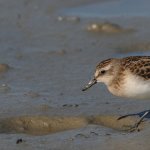For thousands of shorebirds, the coastal zone of northwestern Mexico is a vitally important part of the Pacific migratory route, where several species rest and refill their energy during their annual migration. For shrimp farmers, this region also has favorable characteristics and conditions for aquaculture development. Many of these shrimp farms, located in the marshes and natural salt marshes, are used by shorebirds as a resting and feeding site during their southward migration, coinciding with the shrimp harvest season (October-November).
Over the past two years, thanks to support from Environment and Climate Change Canada and Cornell University’s Coastal Solutions program, we have been working with four shrimp farm producers in two of the most important wetlands in northwestern Mexico, Ensenada de Pabellones and Bahía de Santa María, both WHSRN sites. After identifying potential best practices, we have monitored the response of shorebirds to these practices, in order to implement actions that could help the conservation of birds in these productive systems.
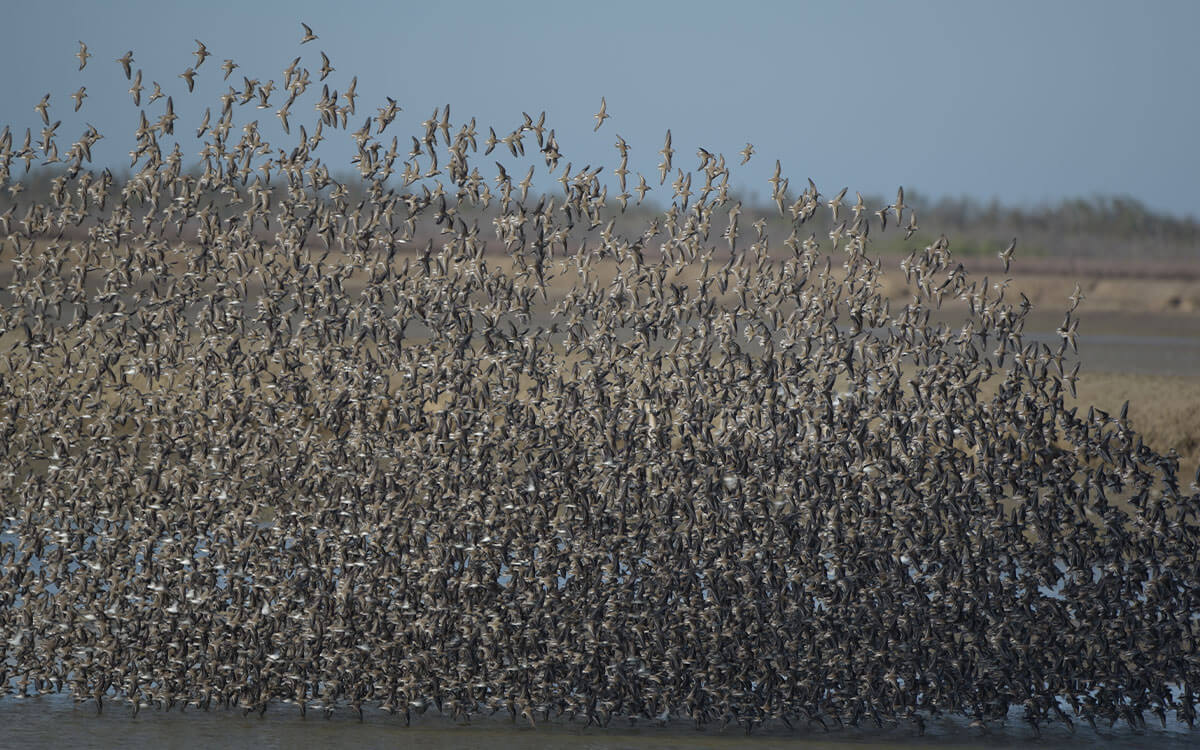
Flock of Western Sandpipers (Calidris mauri) flying in a shrimp pond. Photo: José Ramón Ávalos.
Among the most relevant results during the monitoring conducted in 2021 harvest season (November-December) we recorded 79 species of waterbirds, 24 of which were shorebirds. The most abundant species were the Western Sandpiper, Marbled Godwit (Limosa fedoa), Semipalmated Plover (Charadrius semipalmatus) and Dowitchers (Limnodromus sp.). At the site level, we observed a greater number of individuals in Ensenada Pabellones farms than in Bahía de Santa María. For example, in a 49.4 acres (20 hectares) pond we observed more than 22,000 individuals of Western Sandpiper alone. In addition, we recorded other species such as Red Knot (C. canutus), Snowy Plover (Ch. nivosus) and American Oystercatcher (Haematopus palliatus) which, although not as abundant, are important given the conservation issues they face in Mexico.
During this monitoring we observed that some species such as Western Sandpipers, Semipalmated Plovers and Seedeaters remain for more than a week in those ponds where the gates are left open which allows water to enter. This best practice increases the availability of the ponds as feeding sites for shorebirds and is a practice that is implemented on some farms and could be implemented on others until the end of the harvest season or until the ponds are cleaned and disinfected.
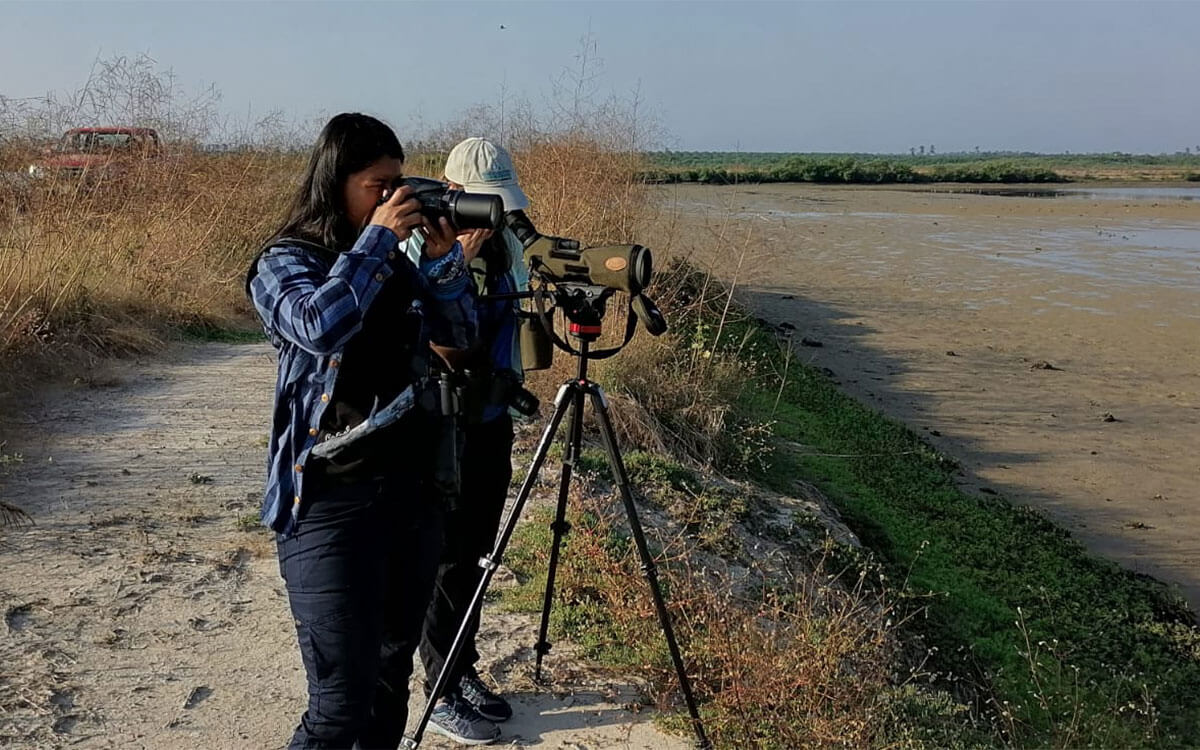
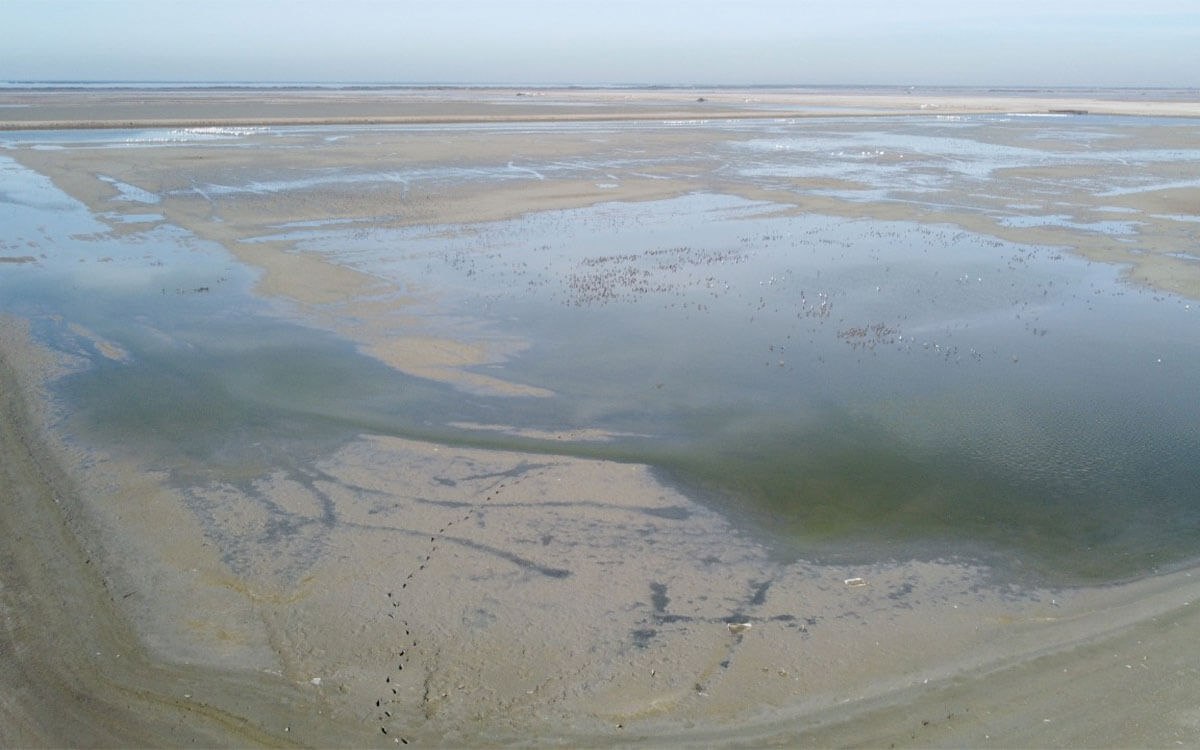
Left: Shorebird counts. Photo: José Ramón Ávalos. Right: Pond one week after harvest. Photo: Medardo Cruz.
We were also able to record various methods used to scare birds away and their frequency. Although these actions are mainly focused on herons, ducks, cormorants, and gulls, shorebirds are also affected, in some cases causing irreparable damage. For this reason, we seek to implement non-lethal and friendlier methods to repel “problem” species, along with training of farm personnel to minimize disturbance to shorebirds and other aquatic birds.
This monitoring has allowed us not only to better understand how shorebirds use these ‘built habitats’ and how the application of some measures can help conserve these species.It has also facilitated communication with shrimp farm producers and workers. We hope in the coming months to conduct workshops and meetings with them to provide tools to help find a balance between aquaculture production and the conservation of the environment and shorebirds.
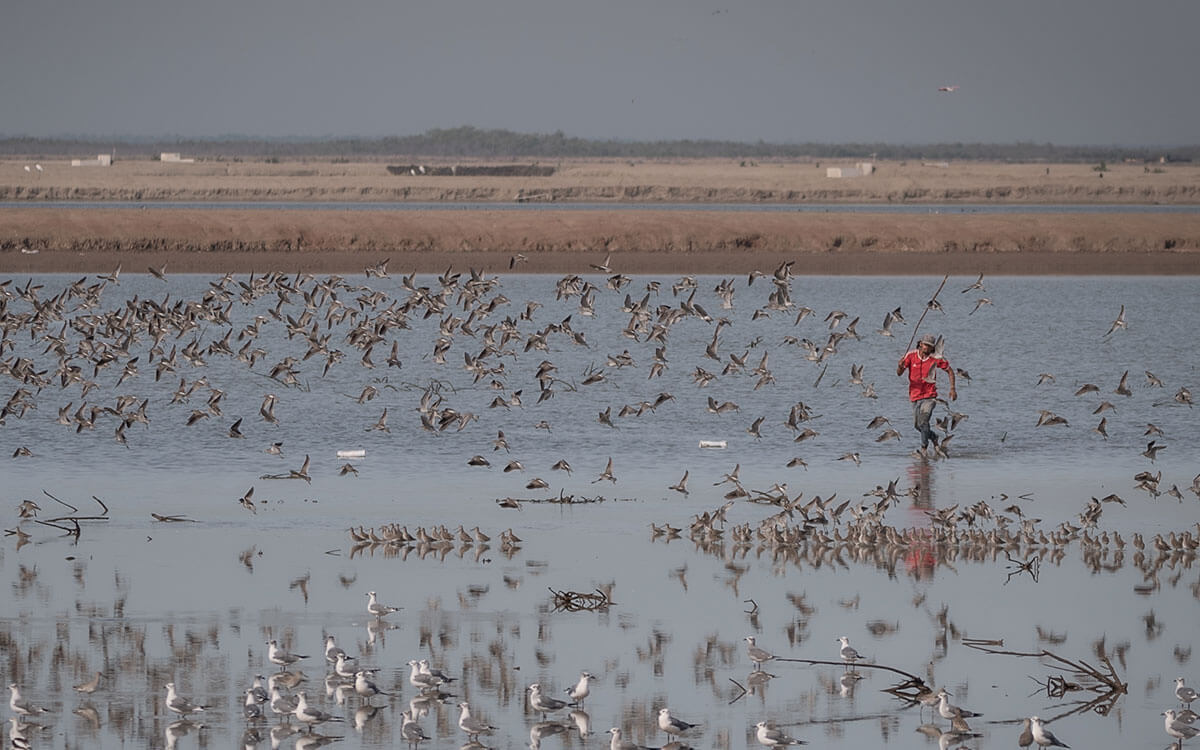
Farm staff chasing waterfowl and shorebirds away from a pond to be harvested. Photo: José Ramón Ávalos.
We would like to thank Acuícola El Chapeteado, Rebeca (Ensenada de Pabellones), Botetero I and II (Bahía Santa María) for their participation in helping to improve knowledge about the use of these productive systems for shorebirds.
Cover Photo: El Chapeteado Farm, Ensenada de Pabellones. Photo: Medardo Cruz.






